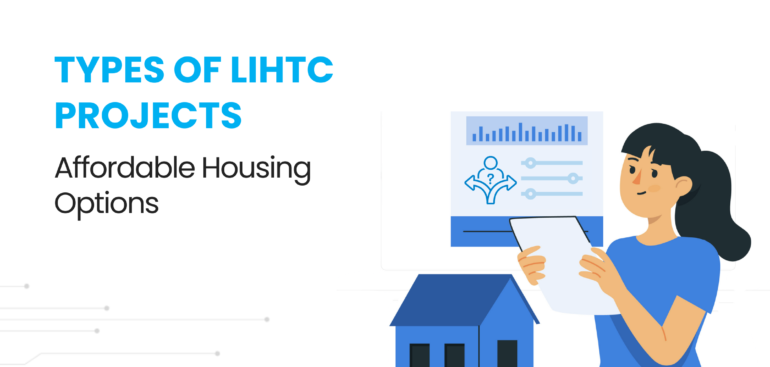The primary objective of affordable housing initiatives is to ensure everyone has a budgeted and decent place to call home. The Low-Income Housing Tax Credit (LIHTC) program is vital in making this happen. But there is an elephant in the room that needs to be addressed—SILOS.
You might not be familiar with what exactly Silos are in LIHTC?
In the affordable housing industry, Silos are like barriers that separate different groups of people or organizations working on the same goal—building affordable homes. Instead of working together, these groups often operate independently, missing out on opportunities to help each other and making the process less efficient.
In this article, we’ll take a closer look at what Silos in LIHTC are, what are the challenges with Silos, and what we can do about them.
By understanding and addressing these silos, we can make affordable housing projects more effective and accessible to those who need them most.
What is the Low-Income Housing Tax Credit (LIHTC) Program?
The LIHTC program is a teamwork between the government, investors, and developers to build affordable homes for people with low incomes.
Here is how it works:
- Government Support: The government wants to help people find affordable homes. So, they give special credits like rewards to developers who promise to build houses for low-income people.
- Investors Step In: These credits are valuable, but developers can’t use them directly. Instead, they sell them to investors. The investors give money to the developers in exchange for these credits.
- Building Affordable Homes: With the money from selling the credits, developers build homes for low-income people. These homes are rented out at prices that these people can afford, making it easier for them to find a home that lies within their budget.
- State Agencies Keep Score: Each state has a team of people who ensure everything is fair and square. They decide which projects get the credits.
Ultimately, everyone wins—the developers get the funding they need, investors get tax benefits, and most importantly, people with low incomes get decent homes they can afford.
Common Silos that Exist in LIHTC
Despite the shared goal of providing affordable housing, several barriers can hinder the efficiency of the LIHTC program.
Communication breakdowns, fragmented planning, limited information sharing, regulatory hurdles, resource allocation issues, lack of community engagement, resistance to technology and innovation, and short-term focus can create Silos in LIHTC projects. These barriers lead to delays, inefficiencies, and mistrust, hindering long-term sustainability and community impact.
By recognizing and addressing these silos, stakeholders can work together more effectively to maximize the benefits of LIHTC projects and ensure that affordable housing initiatives reach those who need it most.
Impact of Silos on Affordable Housing
The presence of Silos within the Low-Income Housing Tax Credit (LIHTC) program can have significant repercussions on the development and sustainability of affordable housing initiatives.
Some key impacts include:
- Silos can lead to duplicated efforts, unnecessary delays, and inefficient use of resources.
- Silos prevent stakeholders from fully leveraging their collective expertise, resources, and networks.
- Silos can increase disparities in resource allocation, particularly in communities with limited access to affordable housing.
- Affordable housing projects may fail to address broader goals and priorities without effective collaboration and coordination.
- Silos can hinder efforts to integrate affordable housing with transit, education, healthcare, and other essential services.
- Silos can complicate compliance with regulatory requirements and program guidelines, leading to delays, penalties, and even project cancellations.
Addressing these impacts is crucial for fostering greater collaboration, transparency, and equity within the LIHTC program.
Best Practices to Address Silos in LIHTC
Here are some best practices for addressing silos in the LIHTC program:
- Promote Collaboration: Develop opportunities for collaboration and open communication among all stakeholders involved in LIHTC projects, including developers, investors, state housing agencies, local governments, and nonprofit organizations.
- Integrated Planning Processes: Engage stakeholders early in the planning and development stages to identify common goals, align resources, and leverage collaboration to maximize impact.
- Utilize Technology: Invest in LIHTC software solutions that streamline communication, data sharing, and project management, ensuring transparency among stakeholders.
- Capacity Building and Training: Provide training and capacity-building opportunities for stakeholders to enhance their understanding of LIHTC requirements, regulations, and best practices.
- Cross-Sector Partnerships: Foster cross-sector partnerships between affordable housing developers, local government agencies, organizations, and other stakeholders. Collaboration will help address multiple community needs and maximize resources.
- Performance Measurement and Evaluation: Establish performance indicators and clear metrics to evaluate the effectiveness and impact of LIHTC projects. Regularly evaluate outcomes, identify lessons learned, and share best practices to inform future decision-making and improve project outcomes.
- Policy Advocacy and Reform: Advocate for policy changes and reforms that address systemic barriers. Promote collaboration within the LIHTC program to identify and address regulatory hurdles, funding constraints, and other obstacles to effective collaboration.
By implementing these best practices, stakeholders can break down Silos, foster collaboration, and maximize the impact of LIHTC projects in addressing affordable housing needs.
Let’s Combat Silos with Fusion…
Silos in the LIHTC program pose obstacles to providing quality housing for those in need.
Fusion is a modern-aged LIHTC software that breaks down Silos by connecting stakeholders in a unified platform. By centralizing data and streamlining communication, Fusion promotes transparency and efficiency in LIHTC projects. With real-time insights, stakeholders can navigate compliance and track progress, empowering collaboration toward safe, affordable housing for all.



